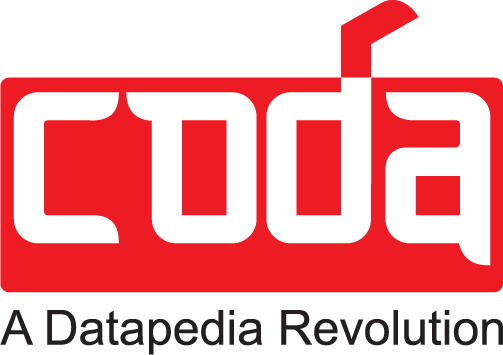Material master standardization in the cement industry is crucial for achieving operational efficiency and competitiveness. The cement sector, characterized by its complex supply chains, high-value assets, and diverse operations, generates massive amounts of data. Without standardization, this data often becomes fragmented, inconsistent, and prone to duplication.
Material master standardization is the process of organizing, cleansing, and harmonizing material data to ensure uniformity across systems. When combined with data cleansing and duplication management, it creates a single, accurate source of truth that supports seamless operations, cost control, and strategic decision-making.
What is Material Master Standardization?
Material master standardization ensures that all material-related data—raw materials, spare parts, consumables, and finished goods—adheres to consistent formats and structures. This involves categorizing materials systematically and aligning data with standardized templates.
Key Objectives of Material Master Standardization:
- Data Accuracy: Eliminate errors and inconsistencies in material data.
- Uniformity: Create a cohesive structure across all departments and systems.
- Integration: Enable seamless data flow across ERP systems and supply chain networks.
- Efficiency: Enhance procurement, inventory management, and maintenance operations.
Why Does the Cement Industry Need Material Master Standardization?
The cement industry operates in a highly competitive environment with thin profit margins. Challenges such as supply chain disruptions, unplanned downtimes, and inefficient inventory management can have significant financial impacts. Material master standardization in the cement industry addresses these challenges by delivering the following benefits:
1. Ensuring an Uninterrupted Supply Chain
The cement industry sources materials from various vendors, plants, and locations. Data inconsistencies can lead to supply chain inefficiencies, delays, and stockouts. Standardization establishes unique cataloging formats, ensuring that data from different sources integrates smoothly and supports uninterrupted operations.

Tired of wasting time and money on duplicate or messy material data? It’s time to fix that. Let us help you clean, organize, and standardize your data for smoother operations and better decisions.
2. Enhancing Maintenance Efficiency
Equipment and machinery in cement plants operate in demanding environments, making effective maintenance crucial. Standardized spare parts data ensures that the right materials are available when needed, reducing the risk of unplanned downtime and costly equipment failures.
3. Enabling Better Decision-Making
Clean, standardized data facilitates accurate reporting and analytics. Decision-makers can rely on this data to optimize procurement strategies, forecast inventory needs, and streamline production processes, ultimately driving profitability.
What is Data Cleansing?
Data cleansing is a core component of Master Data Management (MDM), aimed at identifying and correcting errors, inconsistencies, and redundancies in datasets. In the cement industry, data cleansing is critical for maintaining the integrity of material master data.
Steps in Data Cleansing:
- Data Profiling: Analyzing data to detect errors and inconsistencies.
- Error Correction: Fixing inaccuracies such as incorrect descriptions, missing values, or misplaced entries.
- Standardization: Aligning data with predefined formats and naming conventions.
- Validation: Ensuring that cleansed data adheres to industry standards and business rules.
By automating data cleansing, cement companies can save time, reduce manual effort, and improve the quality of their data.
What is Data Duplication?
Data duplication, or redundancy, occurs when multiple records of the same data are created unintentionally. This problem is common in industries like cement, where data is collected from various sources and systems.
Types of Data Duplication:
- Intentional Duplication: Created for backups or security purposes.
- Unintentional Duplication: Results from errors in data entry, poor integration practices, or inconsistent naming conventions.
Issues Caused by Data Duplication:
- Increased database storage costs.
- Reduced system performance and slower operations.
- Inaccurate analysis due to skewed data sets.
By implementing deduplication strategies, cement companies can eliminate redundancies, optimize storage, and enhance data reliability.
Benefits of Data Deduplication
Deduplication offers multiple advantages that directly impact operational efficiency and cost savings:
- Optimized Storage: Reduces database size, making backups and migrations faster and more cost-effective.
- Improved Data Quality: Ensures data is accurate, relevant, and free from redundancies.
- Enhanced System Performance: Faster retrieval and processing of data improve overall system efficiency.
- Cost Savings: Lower IT expenses by minimizing unnecessary storage and processing needs.
How Does Data Cleansing and Deduplication Benefit the Cement Industry?
The cement industry faces unique challenges due to the sheer volume and complexity of its operations. Data cleansing and deduplication provide a strategic advantage by addressing these challenges effectively.
1. Optimizing Inventory Storage
Duplicate and irrelevant data inflate inventory counts, complicating management and leading to overstocking or shortages. Cleansed data ensures accurate inventory tracking, reducing storage costs and improving scalability.
2. Enhancing Procurement Efficiencies
The procurement process for raw materials like limestone and fly ash involves numerous suppliers and transactions. Cleansed data eliminates duplicate vendor records and incorrect purchase orders, streamlining procurement operations.
3. Supporting Maintenance Operations
Inconsistent spare parts data creates confusion during maintenance activities. Standardized and deduplicated data enables efficient management of spare parts, ensuring timely repairs and reducing downtime.
4. Driving Cost and Time Savings
Automation in data cleansing and deduplication minimizes manual effort, accelerates data integration, and prevents unnecessary expenses. This helps cement companies allocate resources more effectively.
5. Enabling Digital Transformation
Technologies like IoT and digital twins are transforming the cement industry. These systems rely on accurate and reliable data to deliver real-time insights. Cleansed and deduplicated data forms the foundation for successful digital transformation initiatives.
How to Implement Data Cleansing and Deduplication in Cement Companies
Step 1: Conduct a Data Audit
Analyze existing datasets to identify errors, duplicates, and inconsistencies.
Step 2: Define Standards and Templates
Establish naming conventions, formats, and templates to ensure consistency across all data entries.
Step 3: Leverage Automated Tools
Use advanced tools for data profiling, cleansing, and deduplication to streamline the process.
Step 4: Integrate Systems
Ensure that all ERP and database systems are integrated to support real-time data sharing and updates.
Step 5: Monitor and Maintain Data Quality
Regularly audit and update data to maintain accuracy and relevance over time.
Real-World Impact: Case Study
A leading cement manufacturer in the GCC region faced operational inefficiencies due to poor data management. By implementing material master standardization, data cleansing, and deduplication:
- Inventory costs were reduced by 20% through better stock management.
- Procurement errors decreased by 15%, saving significant time and resources.
- Maintenance downtime was reduced by 30%, improving overall equipment availability.
These improvements contributed to a 10% increase in operational efficiency and enhanced the company’s competitive position in the market.
Conclusion
Material master standardization in the cement industry, supported by data cleansing and duplication management, is essential for operational excellence. By addressing data inaccuracies, reducing redundancies, and leveraging automated tools, cement companies can unlock new levels of efficiency, cost savings, and digital transformation.
Adopting these practices ensures that organizations stay ahead in a competitive market while optimizing their supply chains, inventory management, and decision-making processes.

Your data should work for you, not against you. Discover how material master standardization can simplify your processes and boost your bottom line.


